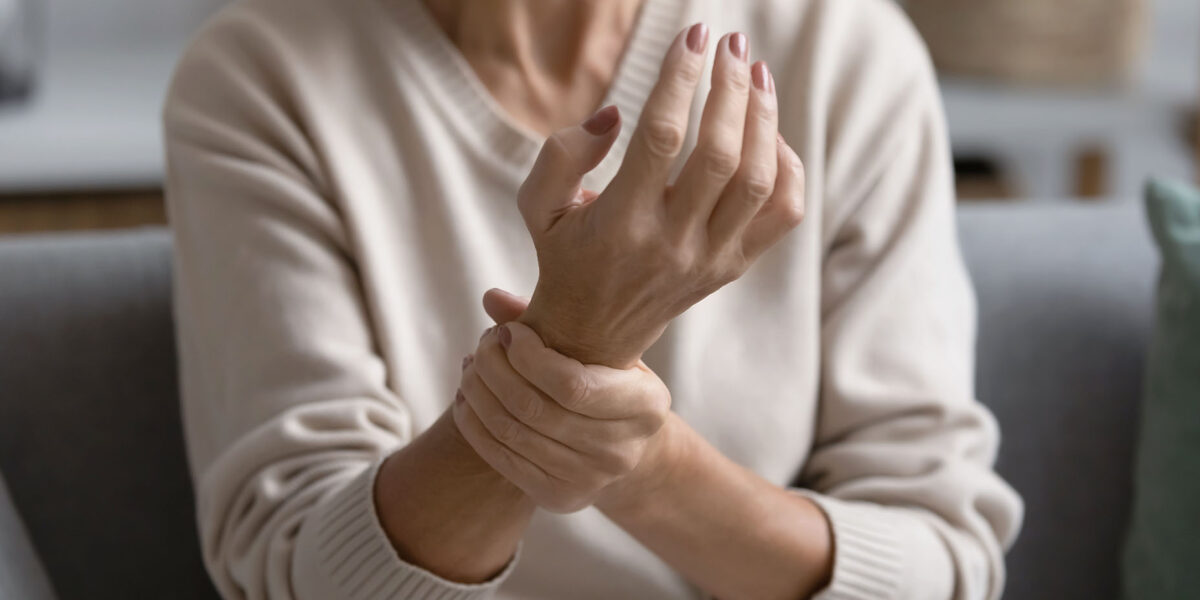Having trouble upping your weight in pilates? Feeling like your efforts in the health club are getting you nowhere? It could be your vitamin D levels.
It’s no secret that vitamin D is essential for healthy bones – but did you know that it’s also a crucial nutrient for maintaining muscle health? In fact, weak muscles are a hallmark feature of vitamin D deficiency [1].
In this article, we’ll look at the connection between vitamin D and muscle health, how vitamin D enhances the strength of your muscles, and why ensuring your vitamin D levels are adequate is important for all stages of the life cycle.
Vitamin D and Muscle Performance
Vitamin D deficiency impacts young and old alike but may have more severe consequences for more senior folks due to the impact that low vitamin D can have on your bones and muscles.
For example, research shows that people over 60 years old with low vitamin D levels are more likely to have weak muscles and impaired muscle performance than those with healthy vitamin D levels [2].
Why does this matter?
Weak muscles and impaired performance lead to greater risks of falls and fractures. While a young, healthy individual may be able to recover from a fall relatively quickly, for older people, one bad fall could set them back for months or even years.
That said, studies show that the importance of vitamin D isn’t limited to people over the age of 60. In one study, active young people saw increases in muscle protein synthesis, strength, jump height, jump velocity, jump power, and exercise capacity when they increased their vitamin D levels [3].
The takeaway here is that whether you’re in your 60s or teens, ensuring your vitamin D levels are in a healthy range is crucial for overall muscle health and strength.
How Vitamin D Impacts Muscle
We know that adequate levels of vitamin D assist in muscle repair and strength, but what’s the connection?
Studies show that there are several potential mechanisms at play.
First, vitamin D has been shown to inhibit the production of myostatin – a powerful protein that inhibits muscle growth and negatively affects bone mass and fracture healing. By inhibiting this protein’s activity, vitamin D allows for optimal muscle growth while simultaneously supporting strong bones [4].
Second, vitamin D increases the formation and development of new muscle cells (called myocytes). By increasing the production of new muscle cells, vitamin D helps to protect against muscle atrophy (muscle loss), and maintains muscle quality [5].
Third, studies show that vitamin D helps to regulate how quickly your muscles heal and regenerate after injury. This is especially important for older folks that tend to have a longer healing time. Although there’s no consensus on precisely how vitamin D assists with muscle healing, its anti-inflammatory activity likely plays a role, along with its ability to increase cellular energy [5][6].
And finally, research shows that adequate levels of vitamin D can help to reduce the risk of injury due to exercise. By enhancing the strength and integrity of your muscle tissues, vitamin D protects against potential muscle cell damage [7].
Weak Muscles Set The Stage For Weak Bones

Strong, healthy muscles are vital for maintaining strong, healthy bones. Due to the crosstalk between these two tissues, when one is impaired, the other is more likely to become weak as well.
For example, one of the most powerful ways to enhance bone mineral density is through resistance exercise, which causes your muscles to push and pull on your bone tissue. This mechanical stimulation encourages bone growth and development, which strengthens your bones and increases mineralization.
But what happens when muscle weakness impacts bones or vice versa?
Osteosarcopenia
Osteosarcopenia is defined by low bone density and decreased muscle mass and strength. In essence, it’s a combination of sarcopenia (muscle wasting) and osteoporosis (reduced bone mass).
While osteoporosis increases the risk of fracture, sarcopenia increases your risk of falling. As you might imagine, the combination of the two can be very dangerous– particularly as you age [8].
While the biomechanical impact of muscle on bone is well established (as mentioned above), research also shows that there is a biochemical component to osteosarcopenia that plays a role. Specifically, it appears that muscle and bone act as endocrine tissues, secreting hormones that impact the function of one another. Thus, as your muscle becomes weak, it may directly impact your bones on a hormonal level, jeopardizing the integrity of bone tissue and leading to conditions like osteosarcopenia.
Unsurprisingly, vitamin D is thought to play a role in osteosarcopenia due to its involvement in both muscle and bone tissue [9].
How To Increase Your Vitamin D Levels

Historically, if you look back to our ancient ancestors, they would have received the majority of their vitamin D through exposure to sunlight. While getting ample sun exposure sounds easy, there are several factors that can influence your ability to absorb vitamin D from the sun, including the season, latitude, altitude, air pollution, use of sunscreen, skin pigmentation, body fat level, and age.
A few foods provide a fair amount of vitamin D. For example, 3.5 ounces of wild-caught salmon contains 988 IU of vitamin D and 100 grams of canned sardines provides around 272 IU. Other decent vitamin D sources include raw oysters, canned light tuna, and fortified dairy products.
If you’re not a fan of eating these foods regularly and your unique circumstances make sunlight an unreliable source of vitamin D throughout the year, how do you ensure you’re getting adequate vitamin D? This is where high-quality vitamin D supplements come in.
What do we mean by high quality? Not all vitamin D supplements on the shelf are created equal, so you’ll want to make sure that your supplement includes a minimum dose of 600 IU, and is in the vitamin D3 (cholecalciferol) form, not the vitamin D2 form. While both D3 and D2 are forms of vitamin D, D3 has a far superior absorption rate [10].
While you may not be a fan of popping pills, health experts agree that vitamin D is one nutrient that most people should make sure to supplement in their diet – especially during the fall and winter months [11].
Takeaway
Whether you’re looking to enhance your muscle mass, protect your bones, or maintain a healthy musculoskeletal system in general, vitamin D appears to be one nutrient that is a must-have.
Due to its direct impact on muscle strength, healing, and regeneration, adequate levels of vitamin D are crucial for old and young alike.
If you’re unsure about your current vitamin D levels, you can ask your doctor for a blood test to give you an idea of whether or not you need to start supplementing. Some signs that your vitamin D is low include muscle weakness, low mood, fatigue, and bone pain [12].
As low levels of vitamin D may not show up with obvious symptoms at first, it’s a good idea to check your levels regularly.
To learn more about bones, muscles, and healthy aging, sign up for the AlgaeCal Newsletter.
FAQs
Does vitamin D deficiency affect muscle strength?
Yes, vitamin D plays an important role in the maintenance, growth, and regeneration of muscle tissue. Low levels of vitamin D have been linked to loss of muscle strength and coordination.
How does vitamin D affect muscle function?
Vitamin D plays a variety of roles in muscle health and function. It assists in the regeneration and healing of muscle tissue, inhibits muscle breakdown, promotes the synthesis of new muscles, and protects muscle cells against damage and injury.
How long does it take for vitamin D to work on muscles?
It generally takes a few weeks of vitamin D supplementation to create a rise in vitamin D levels.
References
- Girgis, C. M., & Brennan‐Speranza, T. C. (2021). Vitamin D and skeletal muscle: current concepts from preclinical studies. JBMR plus, 5(12), e10575.
- Janssen, H. C., Samson, M. M., & Verhaar, H. J. (2002). Vitamin D deficiency, muscle function, and falls in elderly people. The American journal of clinical nutrition, 75(4), 611-615.
- Shuler, F. D., Wingate, M. K., Moore, G. H., & Giangarra, C. (2012). Sports health benefits of vitamin D. Sports health, 4(6), 496-501.
- Poole, C. D., Smith, J., & Davies, J. S. (2015). Cost-effectiveness and budget impact of Empirical vitamin D therapy on unintentional falls in older adults in the UK. BMJ open, 5(9), e007910.
- Girgis, C. M., & Brennan‐Speranza, T. C. (2021). Vitamin D and skeletal muscle: current concepts from preclinical studies. JBMR plus, 5(12), e10575.
- Latham, C. M., Brightwell, C. R., Keeble, A. R., Munson, B. D., Thomas, N. T., Zagzoog, A. M., … & Fry, J. L. (2021). Vitamin D promotes skeletal muscle regeneration and mitochondrial health. Frontiers in Physiology, 12, 660498.
- Pilch, W., Kita, B., Piotrowska, A., Tota, Ł., Maciejczyk, M., Czerwińska-Ledwig, O., … & Pałka, T. (2020). The effect of vitamin D supplementation on the muscle damage after eccentric exercise in young men: a randomized, control trial. Journal of the International Society of Sports Nutrition, 17(1), 53.
- Kirk, B., Zanker, J., & Duque, G. (2020). Osteosarcopenia: epidemiology, diagnosis, and treatment—facts and numbers. Journal of Cachexia, Sarcopenia and Muscle, 11(3), 609-618.
- Maurel, D. B., Jähn, K., & Lara-Castillo, N. (2017). Muscle–bone crosstalk: Emerging opportunities for novel therapeutic approaches to treat musculoskeletal pathologies. Biomedicines, 5(4), 62.
- Lehmann, U., Hirche, F., Stangl, G. I., Hinz, K., Westphal, S., & Dierkes, J. (2013). Bioavailability of vitamin D2 and D3 in healthy volunteers, a randomized placebo-controlled trial. The Journal of Clinical Endocrinology & Metabolism, 98(11), 4339-4345.
- https://www.nhs.uk/conditions/vitamins-and-minerals/vitamin-d/
- https://my.clevelandclinic.org/health/diseases/15050-vitamin-d-vitamin-d-deficiency#symptoms-and-causes






O
August 5, 2023 , 10:57 amD2 or D3? it doesn’t say 😔